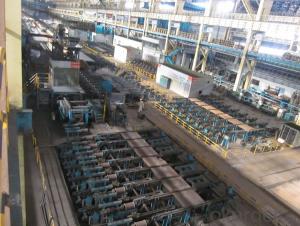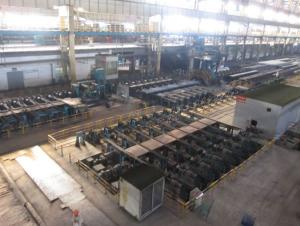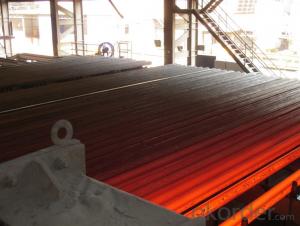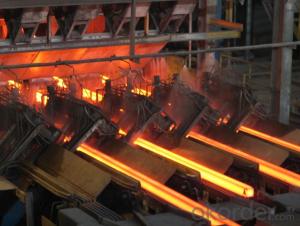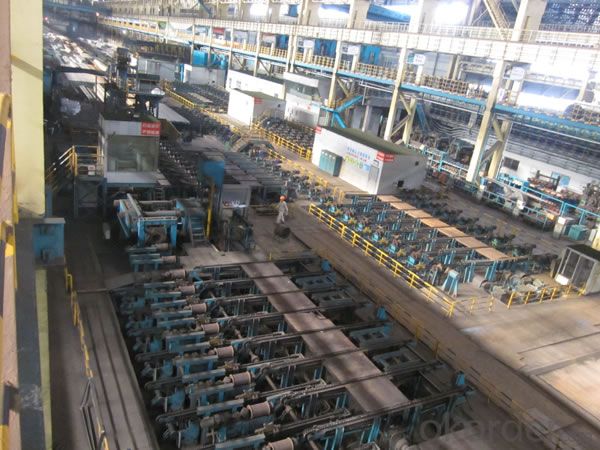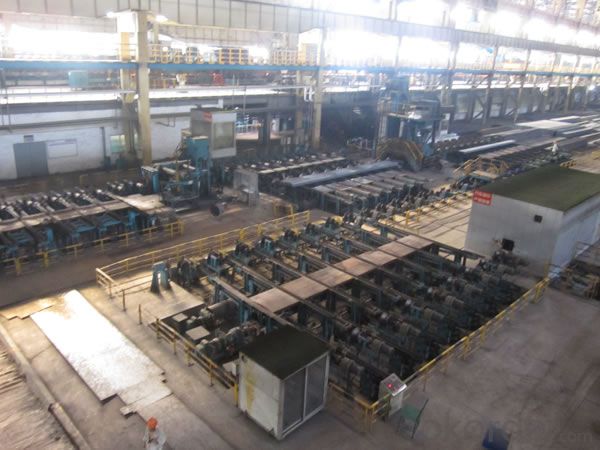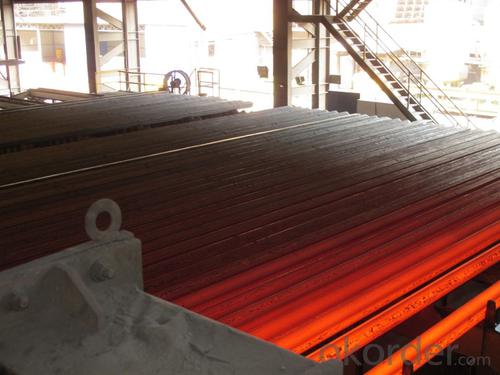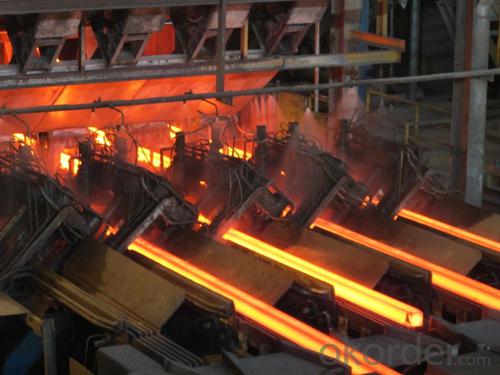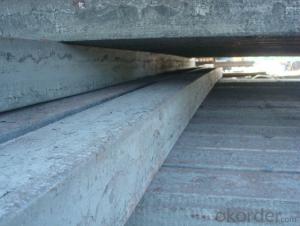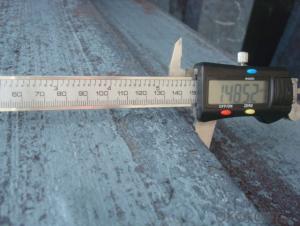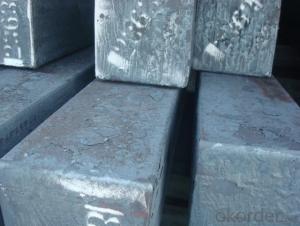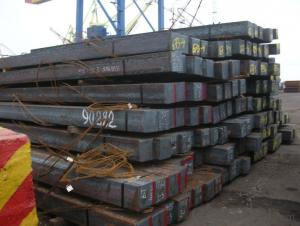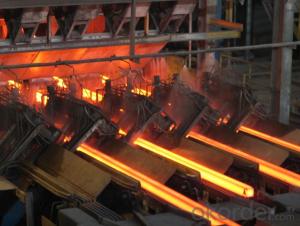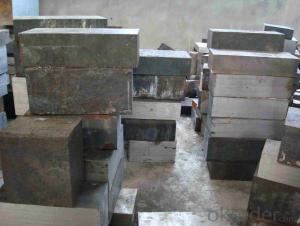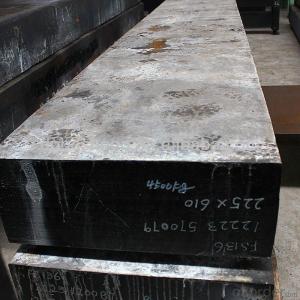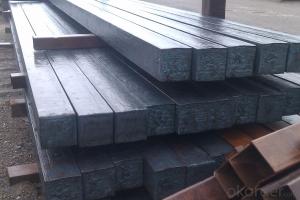Prime quality square alloy steel billet 105mm Q235
- Loading Port:
- Tianjin
- Payment Terms:
- TT OR LC
- Min Order Qty:
- 100 m.t.
- Supply Capability:
- 10000 m.t./month
OKorder Service Pledge
OKorder Financial Service
You Might Also Like
Structure of Prime quality square alloy steel billet 105mm Q235
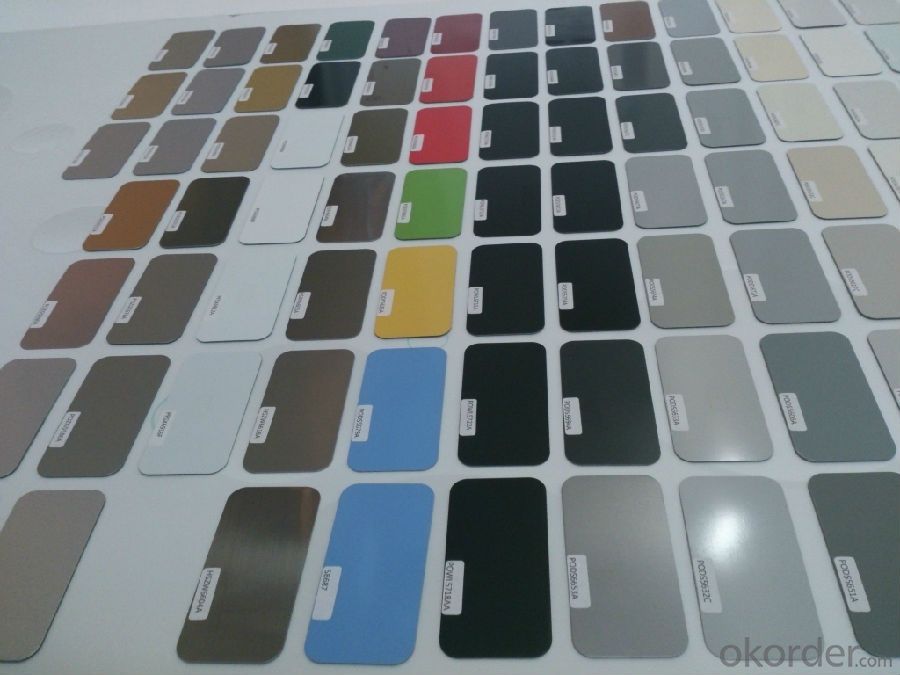
Description of Prime quality square alloy steel billet 105mm Q235
1. Prepainted steel coil is coated with organic layer, which provides higher anti-corrosion property and a longer lifespan than that of galvanized or galvalume steel sheets.
2. The base metals for prepainted steel coil consist of cold rolled, HDGI Steel, electro-galvanized and hot-dip alu-zinc coated steel. The finish coats of prepainted steel coil can be classified into groups as follows: polyester, silicon modified polyesters, polyvinylidene fluoride, high-durability polyester, etc.
3. The production process has evolved from one-coating-and-one-baking to double-coating-and-double-baking, and even three-coating-and-three-baking.
4. The color of the prepainted steel coil has a very wide selection, like orange, cream-colored, dark sky blue, sea blue, bright red, brick red, ivory white, porcelain blue, etc.
5. The prepainted steel coils can also be classified into groups by their surface textures, namely regular prepainted sheets, embossed sheets and printed sheets.
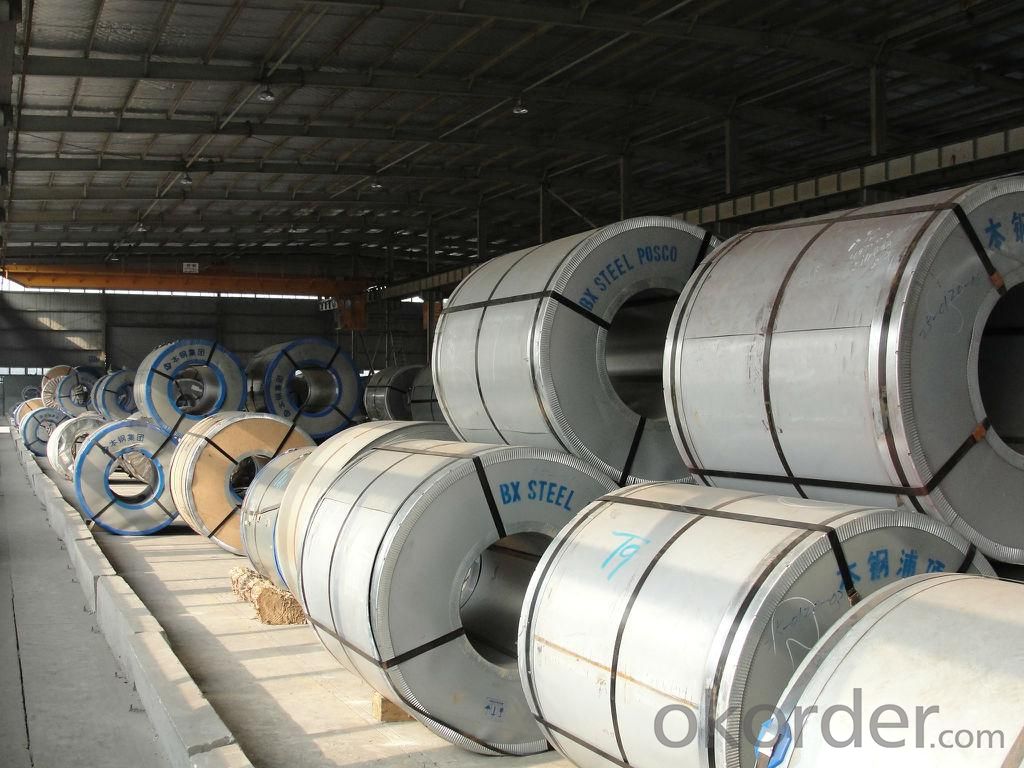
Main Feature of Prime quality square alloy steel billet 105mm Q235
Uncoated CR steel sheet
With the features of in line with the international highest standards in demension and shape, excellent surface finish and properties, the products are mainly used in home appliance and automobile industries.
Galvanized steel sheet(include HDG and EG)
With the features of good corrosion resistance, the products are mainly used in automobile, home appliance, electronics, building and machinery manufacture industries, etc.
Precoated steel sheet
With the features of enviromental protection and good processablility, long lasting surface durability, rich in colors, the products are maily used in building, home appliance and furniture industries, etc.
Applications of Prime quality square alloy steel billet 105mm Q235
Construction
Manufacture anticorrosion, industrial and civil architecture roof boarding, roof grille
Light industries
Home appliance's case, civil chimney, kitchen utensils
Auto industry
Corrosion resistant parts of cars
Agriculture
Food storage, meat and aquatic products' freezing and processing equipment
Commerce
Equipments to store and transport materials, and packing implements
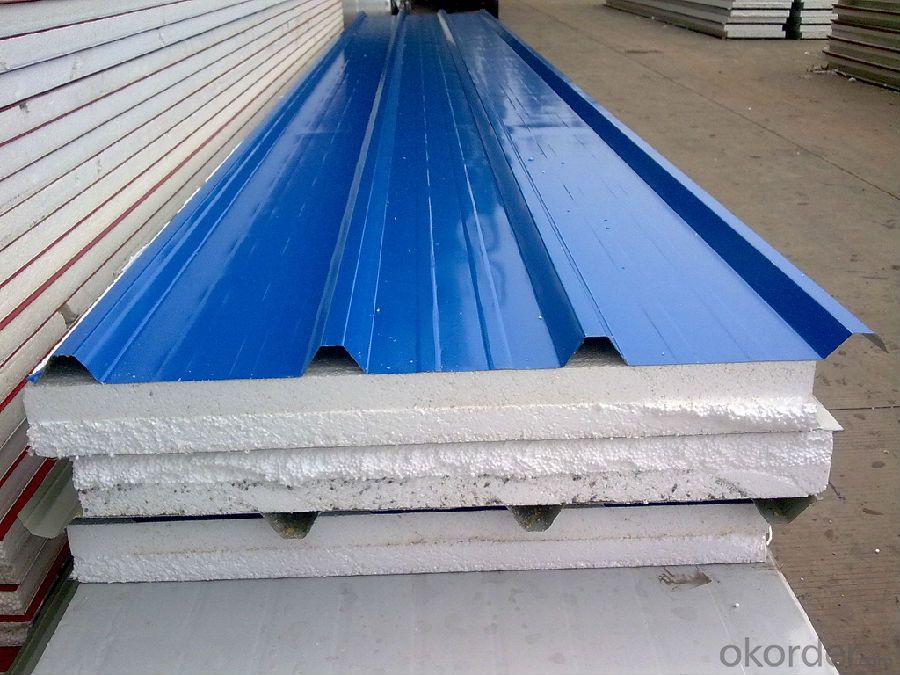
Specifications of Prime quality square alloy steel billet 105mm Q235
Product | Prime quality square alloy steel billet 105mm Q235 |
Material Grade | SGCC / SGCH / DX51D+AZ, etc |
Thickness | 0.6-3.0mm |
Width | 500-1500mm |
Tolerance | Thickness: +/-0.02mm , Width:+/-2mm |
Zinc-coating | Z30-150g/m2 |
Technique | Raw material: Hot rolled steel coil --> Cold rolled_>hot dipped galvalume |
Surface | Dried, Chromated, Unoiled |
Spangle | Regular spangle , small spangle, zero spangle |
ID | 508MM 610MM |
Coil weight | 1-25MT |
Export package | Cardboard inner sleeves, Waterproof paper, galvanized steel covered and steel strip packed |
FAQ of Prime quality square alloy steel billet 105mm Q235
We have organized several common questions for our clients,may help you sincerely:
1. How Can I Visit There?
Our company is located in Tianjin City, China, near Beijing. You can fly to Tianjin Airport Directly. All our clients, from home or aboard, are warmly welcome to visit us!
2. How Can I Get Some Sample?
We are honored to offer you sample.
3. Why choose CNBM?
Our delivery time about 15-20days for standard sizes, if you have other requirements like hardness, quanity and width ,it is about 20-40days. But don't worry we also try our best for the delivery time ,because time longer and our cost is higher.
- Q: How are steel billets used in the manufacturing of power plant equipment?
- Steel billets are an essential component in the manufacturing of power plant equipment due to their superior strength and durability. These billets serve as the raw material that is shaped and formed into various parts and components required for power plant machinery. One of the key applications of steel billets in power plant equipment manufacturing is in the production of turbine blades. These blades are subjected to high temperatures, extreme pressures, and rotational forces. Steel billets are carefully selected to possess the necessary mechanical properties, such as high tensile strength and resistance to corrosion and fatigue, ensuring the blades can withstand the demanding operating conditions. Moreover, steel billets are also used in the production of generator rotors and stators. These components are responsible for converting mechanical energy into electrical energy. The strength and stability of steel billets allow them to withstand the intense magnetic fields and rotational forces generated by the generator, ensuring reliable and efficient power generation. Furthermore, steel billets are utilized in the manufacturing of boilers and pressure vessels, which are crucial for the power generation process. These vessels are subjected to high pressures and temperatures, and steel billets with excellent heat resistance and pressure containment properties are employed to ensure the safety and reliability of the power plant equipment. In summary, steel billets are integral to the manufacturing of power plant equipment due to their superior strength, durability, and resistance to extreme conditions. Whether it is for turbine blades, generator components, or pressure vessels, steel billets play a crucial role in ensuring the reliable and efficient operation of power plants.
- Q: What are the safety precautions to be taken while handling steel billets?
- To ensure the well-being of individuals and maintain the integrity of the material, it is important to adhere to several safety precautions when dealing with steel billets. Some key safety measures include: 1. Personal Protective Equipment (PPE): It is crucial to wear the appropriate PPE, such as gloves, safety glasses, and steel-toed boots, to protect against potential injuries. Steel billets are heavy and mishandling them can lead to severe harm. 2. Proper Lifting Techniques: When lifting steel billets, it is essential to use correct lifting techniques, such as bending at the knees and maintaining a straight back. This helps prevent strains, sprains, and other musculoskeletal injuries. 3. Adequate Training: Workers must receive proper training on the safe handling of steel billets. This includes understanding the weight and dimensions of the billets, knowing how to move them safely, and being aware of potential hazards. 4. Secure Storage and Transportation: To prevent accidents, steel billets should be stored and transported securely. They should be stacked properly, secured, and not overloaded to prevent falling or shifting during handling. 5. Clear Communication: Clear communication is crucial in a work environment where multiple individuals are involved in handling steel billets. This involves using appropriate signals and verbal communication to coordinate movements and ensure everyone's safety. 6. Equipment Inspection: Before handling steel billets, it is important to inspect the equipment being used, such as cranes, forklifts, or other lifting devices. This helps identify any potential issues or malfunctions that could compromise safety. 7. Regular Maintenance: Regular maintenance of equipment used for handling steel billets is vital to ensure their proper functioning. This includes inspections, repairs, and replacements as necessary. 8. Hazard Identification: Workers should be trained to identify potential hazards associated with handling steel billets, such as sharp edges, hot surfaces, or slippery floors. Promptly addressing these hazards can prevent accidents and injuries. 9. Ergonomic Considerations: When designing workstations and handling procedures, ergonomic factors should be taken into account. This includes ensuring proper height and reach distances, providing adequate space for movement, and using tools or equipment that reduce strain on the body. 10. Emergency Response: Lastly, workers should be familiar with emergency response procedures in case of accidents or injuries. This includes knowing the location of first aid kits, fire extinguishers, emergency exits, and how to report incidents to supervisors. By adhering to these safety precautions, individuals can mitigate the risks associated with handling steel billets and create a safer work environment.
- Q: How are steel billets used in the manufacturing of electrical components?
- Steel billets are commonly used in the manufacturing of electrical components due to their advantageous properties and suitability for specific applications. The process begins with the production of steel billets, which are solid rectangular or square bars of steel formed through casting or hot rolling. In the manufacturing of electrical components, steel billets serve as a raw material that undergoes various processes to be transformed into specific components. One such example is the production of transformer cores, which are vital components in electrical transformers. Transformer cores made from steel billets offer high magnetic permeability, low hysteresis loss, and low electrical conductivity, making them ideal for magnetic induction applications. To manufacture transformer cores, the steel billets are first heated and then passed through a series of rolling mills to shape them into thin laminations. These laminations are then stacked together and insulated using an insulating material such as varnish or paper, forming a core that effectively transfers electrical energy between two or more coils. Steel billets are also used in the production of electrical connectors, terminals, and busbars. These components require high strength, good electrical conductivity, and corrosion resistance. Steel billets can be further processed to create these components through various methods such as forging, machining, or extrusion. In addition to transformers and electrical connectors, steel billets can be used in the manufacturing of other electrical components such as motor cores, switchgear panels, and circuit breaker parts. The versatility of steel billets allows for the production of components with different shapes and sizes, catering to the specific requirements of the electrical industry. Overall, steel billets play a crucial role in the manufacturing of electrical components by providing a strong, durable, and cost-effective raw material that can be shaped and processed to meet the diverse needs of the electrical industry.
- Q: What is the difference between carbon three plants and carbon four plants?
- The mesophyll cells of carbon three plants are more dispersed, and there are no chloroplasts in bundle sheath cells. Photosynthesis is only carbon three cycle, and the utilization rate of carbon dioxide is low. It usually lives in temperate zone.Four carbon plant mesophyll cells arranged regularly, the formation of two circles of the "ring" and bundle sheath cells, bundle sheath cells have no chloroplast grana, photosynthesis has three carbon cycle and carbon cycle four, higher utilization rate of carbon dioxide, the general life in tropical and subtropical regions.The initial product of CO2 assimilation is not photosynthetic carbon cycle in three carbon compounds 3- phosphoglycerate, but four carbon compounds malic acid or aspartic acid plant.
- Q: How are steel billets used in the production of mining conveyors?
- Steel billets are a crucial component in the production of mining conveyors. Mining conveyors are used to transport bulk materials, such as coal, ore, and gravel, over long distances. These conveyors need to be sturdy and durable to withstand the harsh conditions of a mining environment. Steel billets serve as the raw material for manufacturing conveyor rollers. Conveyor rollers are an essential part of the conveyor system as they support and guide the conveyor belt. Steel billets are first heated and then rolled into desired shapes to create the conveyor rollers. The heating process helps in improving the steel's malleability, making it easier to shape. The use of steel billets in the production of mining conveyors ensures that the rollers have high strength and resistance to wear and tear. The steel's properties, such as its toughness and hardness, make it ideal for withstanding heavy loads and abrasive materials. Furthermore, steel billets can be customized to meet specific requirements. Different mining operations may have different needs in terms of conveyor dimensions, load capacities, and environmental conditions. Steel billets allow manufacturers to produce conveyor rollers of various sizes and specifications, ensuring that they are tailored to the specific needs of each mining operation. In summary, steel billets play a vital role in the production of mining conveyors by providing the raw material for manufacturing conveyor rollers. These rollers are essential for supporting and guiding the conveyor belt, ensuring efficient and reliable transportation of bulk materials in a mining environment. The use of steel billets ensures that the conveyor rollers are strong, durable, and capable of withstanding the harsh conditions of the mining industry.
- Q: Are steel billets used in the manufacturing of industrial machinery?
- Yes, steel billets are commonly used in the manufacturing of industrial machinery. They serve as a primary raw material for various components and parts, providing strength, durability, and versatility required in heavy-duty applications.
- Q: How are steel billets used in the manufacturing of wire products?
- Steel billets are an essential component in the manufacturing of wire products. They serve as the starting material for the wire production process. Steel billets are semi-finished products that are typically cast in a rectangular or square shape. These billets are made from molten steel that is solidified and then subjected to various shaping processes to form the desired dimensions. The first step in using steel billets for wire production involves heating them in a furnace to a specific temperature. This heating process, known as annealing, helps soften the steel and make it more malleable. By doing so, it becomes easier to shape the billets into wire forms. Once the billets have been heated and softened, they are then passed through a series of rollers and drawing dies. These machines gradually reduce the cross-sectional area of the billets, elongating them into the desired wire diameter. The process of reducing the diameter of the billets is called wire drawing. During the wire drawing process, the steel billets undergo multiple passes through the rollers and drawing dies. Each pass reduces the diameter of the billets further until they reach the desired wire size. This continuous reduction in diameter also improves the mechanical properties of the wire, such as its tensile strength and ductility. After the wire drawing process, the steel wire is typically coiled onto spools or reels for further processing or distribution. Depending on the intended application, the wire may undergo additional treatments, such as heat treatment or surface coating, to enhance its properties or protect it from corrosion. In summary, steel billets are used in the manufacturing of wire products by being heated, shaped, and drawn through rollers and dies to reduce their diameter and transform them into wire forms. This process allows for the production of wires with various dimensions and properties, making them suitable for a wide range of applications in industries such as construction, automotive, electrical, and manufacturing.
- Q: Fish pole carbon cloth tcf. Vcf. Svf. Hcf. On behalf of what?
- CF: is the abbreviation of Carbon Fiber in English, which means carbon fiber in ChineseCarbon fiber index for T (ton), ordinary carbon cloth is generally 20T-30T.Domestic ordinary carbon fishing rod material is generally 24T carbon fiber cloth. The higher the T value, the higher the strength and elasticity of the material.
- Q: What are the main factors affecting the dimensional stability of steel billets?
- There are several main factors that can affect the dimensional stability of steel billets. 1. Temperature: One of the most significant factors is temperature. Steel billets can undergo thermal expansion or contraction depending on the temperature they are exposed to. Changes in temperature can cause the billets to expand or contract, leading to dimensional changes. It is crucial to control the temperature during the manufacturing process and subsequent cooling stages to minimize these effects. 2. Cooling rate: The rate at which the steel billets cool down after being heated also affects their dimensional stability. Rapid cooling can result in internal stresses within the billet, causing it to warp or distort. On the other hand, slow cooling can lead to uneven cooling and uneven dimensional changes. 3. Composition: The chemical composition of the steel billets plays a significant role in their dimensional stability. Different alloying elements, impurities, and carbon content can influence the material's behavior during heating and cooling. For instance, higher carbon content can increase the likelihood of warping or distortion. 4. Mechanical stresses: Mechanical stresses from handling, transportation, or machining processes can impact the dimensional stability of steel billets. Excessive bending, twisting, or pressure can cause permanent deformation or residual stresses within the billet, affecting its overall dimensional stability. 5. Heat treatment: The heat treatment process can also influence the dimensional stability of steel billets. Different heat treatment methods, such as annealing, quenching, or tempering, can introduce internal stresses or phase transformations that may alter the billet's dimensions. 6. Manufacturing techniques: The processes used during the production of steel billets, such as casting, rolling, or forging, can have an impact on their dimensional stability. Inadequate control or inconsistencies in these manufacturing techniques can lead to variations in the billet's dimensions. It is crucial to consider and control these factors to ensure the dimensional stability of steel billets, as any dimensional changes can affect the subsequent processing steps and the final product's quality.
- Q: How are steel billets used in the manufacturing of energy sector components?
- Steel billets are an essential component in the manufacturing of various energy sector components. These billets are typically produced through a process called continuous casting, where liquid steel is poured into a mold to solidify into a long, rectangular shape. In the energy sector, steel billets serve as a primary raw material for the production of a wide range of components. One of the most common uses of steel billets is in the manufacturing of pipelines. These billets are first heated and then rolled or forged to form seamless or welded pipes, which are used to transport oil, gas, and other fluids across long distances. The high strength and durability of steel make it an ideal material for pipelines, ensuring the safe and efficient transport of energy resources. Additionally, steel billets are also used in the production of power generation equipment. They are shaped and machined into various components such as turbine blades, shafts, and rotors, which are crucial for the operation of power plants. Steel's excellent mechanical properties, including its high tensile strength and resistance to corrosion, make it suitable for withstanding the harsh conditions and high temperatures experienced in power generation processes. Furthermore, steel billets are utilized in the manufacturing of renewable energy infrastructure, such as wind turbine towers. These billets are transformed into large cylindrical sections that form the structural support for wind turbines. The strength and stability of steel ensure that wind turbines can withstand the forces exerted by wind and generate electricity efficiently. In summary, steel billets play a vital role in the energy sector by serving as a raw material for the production of pipelines, power generation equipment, and renewable energy infrastructure. Their strength, durability, and resistance to corrosion make them ideal for withstanding the demanding conditions and ensuring the reliability of energy sector components.
Send your message to us
Prime quality square alloy steel billet 105mm Q235
- Loading Port:
- Tianjin
- Payment Terms:
- TT OR LC
- Min Order Qty:
- 100 m.t.
- Supply Capability:
- 10000 m.t./month
OKorder Service Pledge
OKorder Financial Service
Similar products
Hot products
Hot Searches
Related keywords
